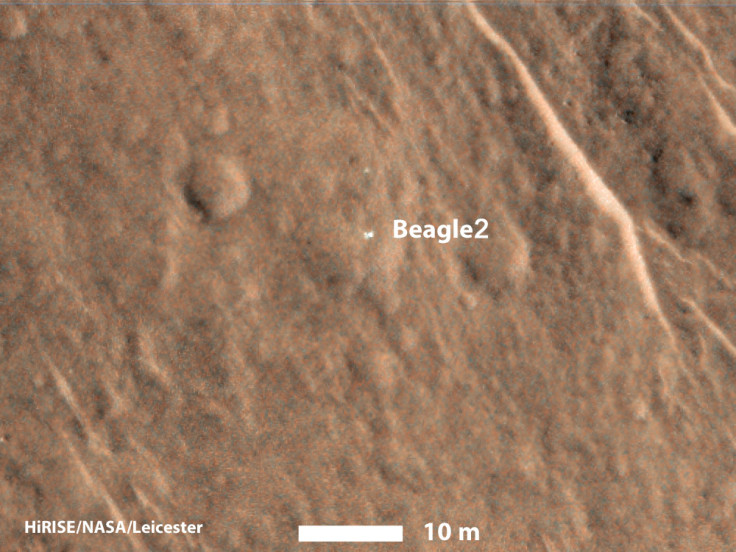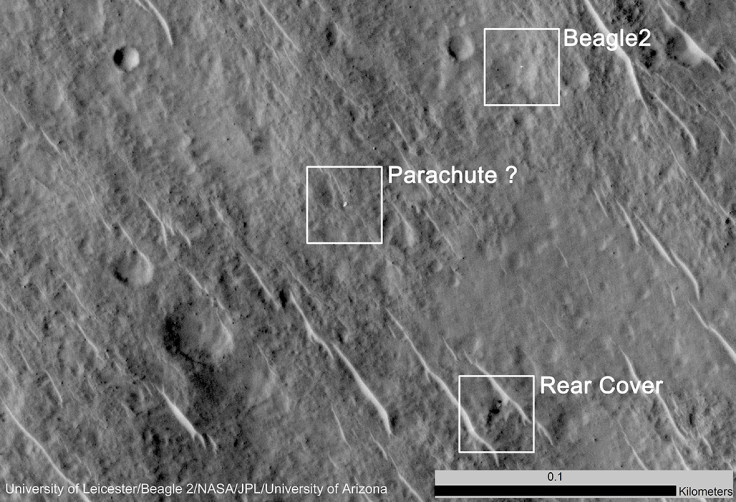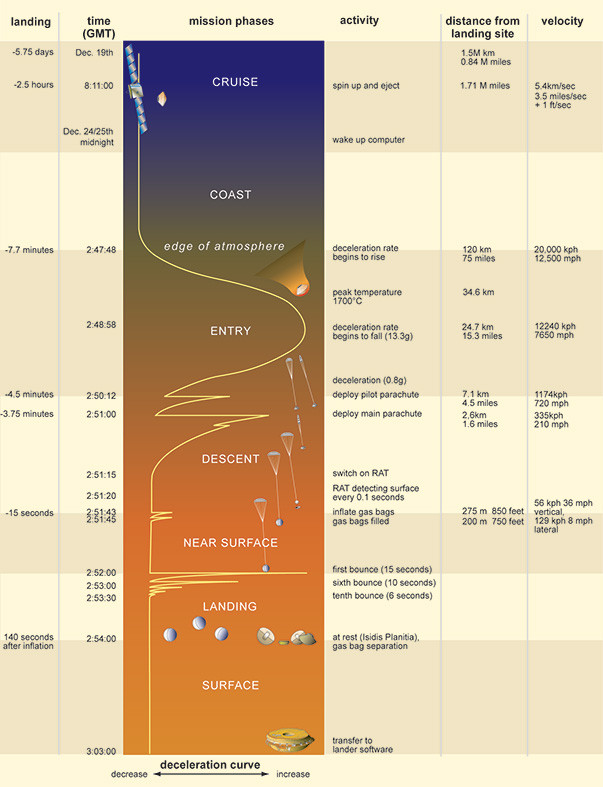Beagle 2 mystery solved: Nasa photos show probe's graveyard following successful Mars landing
The long-lost Beagle 2 spacecraft has been found on the surface of Mars 12 years after it went missing.
The UK Space Agency has released high-resolution images of the Martian probe, which landed on Christmas Day 2003 despite losing contact with ground control.
The discovery puts to bed the mystery of what happened to the spacecraft after it separated from the Mars Express on 19 December 2003.

Findings show that the Entry, Descent and Landing (EDL) sequence for Beagle 2 worked as it should have, meaning it had a successful touchdown on 25 December.
"Images taken by the HiRISE camera on Nasa's Mars Reconnaissance Orbiter (MRO) and initially searched by Michael Croon of Trier, Germany, a former member of ESA's Mars Express operations team at ESOC, have identified clear evidence for the lander and convincing evidence for key entry and descent components on the surface of Mars within the expected landing area of Isidis Planitia (an impact basin close to the equator)," a statement said.
Subsequent imaging by Nasa and the Beagle 2 team confirmed it was the probe.
Images show a partially deployed configuration. They show Beagle 2's rear cover with its pilot chute still attached and the parachute nearby. The pictures are consistent with "only a partial deployment following landing" – this, experts say, explains why no signal or data was ever received from the lander.

Full deployment was required to expose the antenna that would have transmitted data and received commands from Earth.
Mark Sims, who worked on the Beagle 2 project from the start, said: "I am delighted that Beagle 2 has finally been found on Mars. Every Christmas Day since 2003 I have wondered what happened to Beagle 2.
"My Christmas Day in 2003 alongside many others who worked on Beagle 2 was ruined by the disappointment of not receiving data from the surface of Mars. To be frank I had all but given up hope of ever knowing what happened to Beagle 2.

"The images show that we came so close to achieving the goal of science on Mars. The images vindicate the hard work put in by many people and companies both here in the UK and around Europe and the world in building Beagle 2."
He said the complicated entry, descent and landing appear to have worked "perfectly", but that they fell at the last hurdle.
"It was a great pity we couldn't have delivered the world class science Beagle 2 may have brought and even sadder that Colin [Pillinger] and other colleagues who died in 2014 didn't live to see the discovery that Beagle 2 made it to Mars."
David Parker, chief executive of the UK Space Agency, added: "The history of space exploration is marked by both success and failure. This finding makes the case that Beagle 2 was more of a success than we previously knew and undoubtedly an important step in Europe's continuing exploration of Mars."

© Copyright IBTimes 2025. All rights reserved.






















